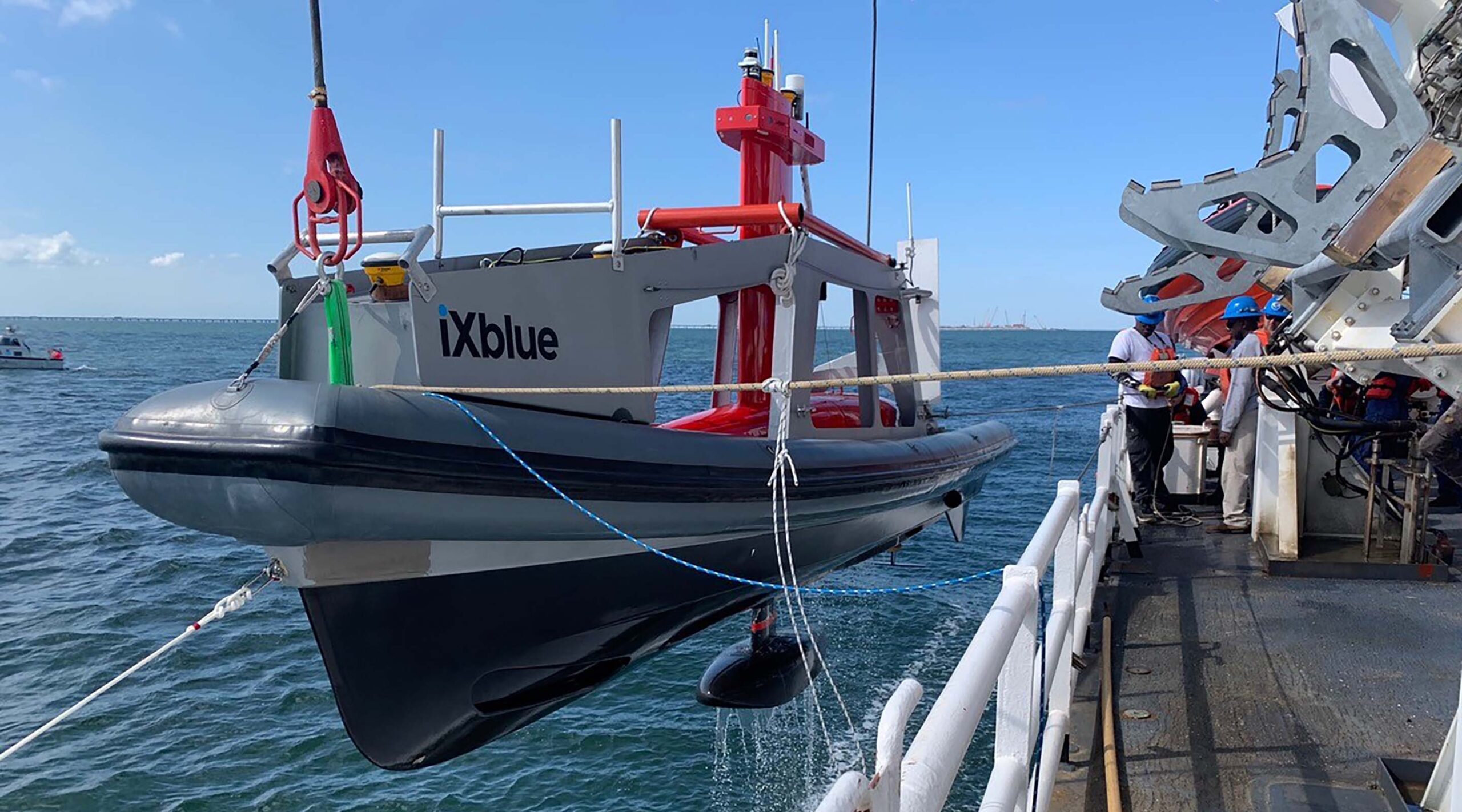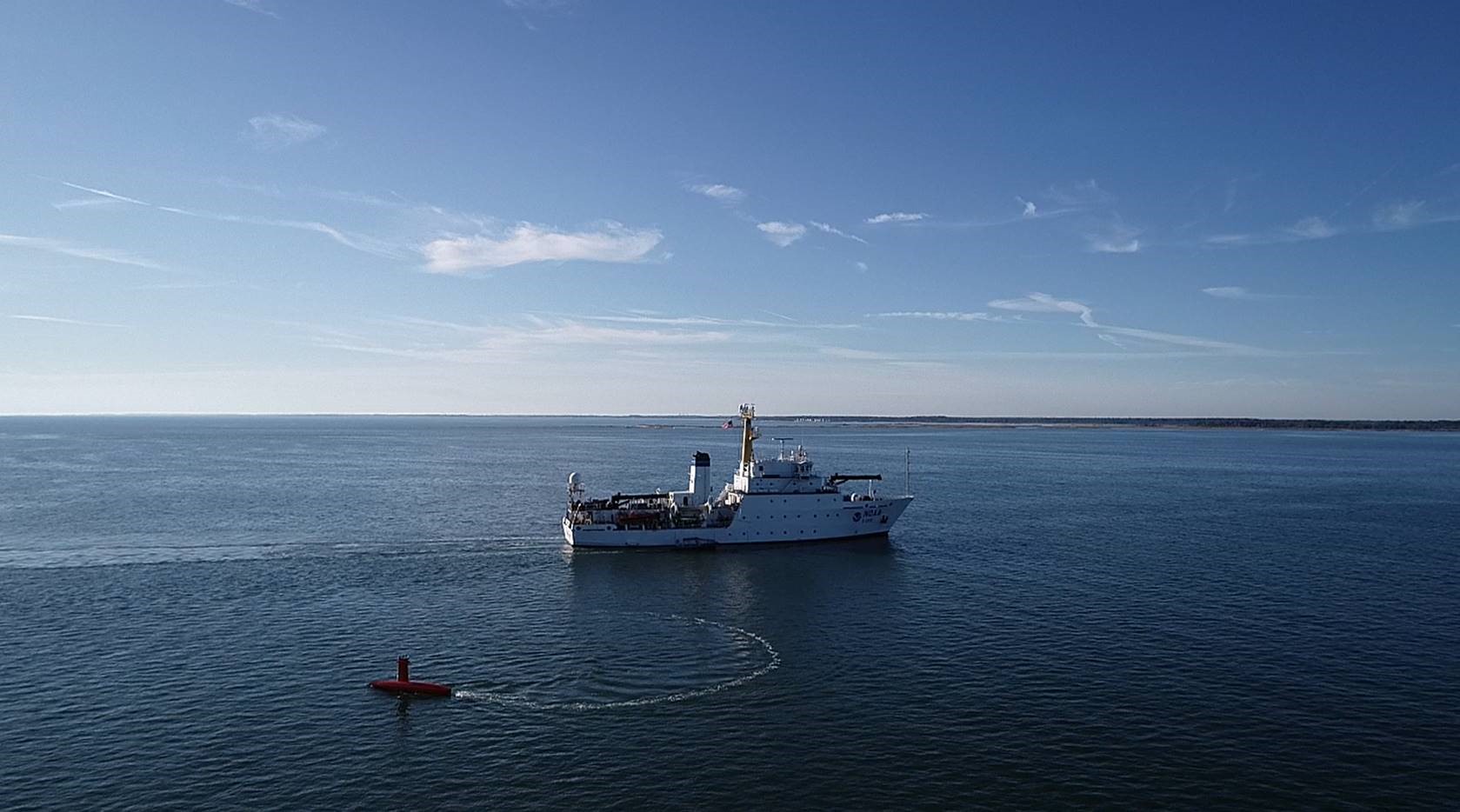- Maritime
NOAA’ Ocean Exploration Cooperative Institute chooses DriX USV to help build the next generation ocean exploration system
Denver (CO), 11/05/2020 – The Ocean Exploration Cooperative Institute (OECI), funded by NOAA’s Office of Ocean Exploration and Research (OER) recently signed a purchase contract to acquire a DriX Unmanned Surface Vessel (USV) from high-tech company iXblue. Signed over the summer, this contract consists of one DriX USV along with a novel custom-designed Universal Deployment System able to launch and recover the USV as well as other AUVs. The autonomous solution is expected to be put to sea by mid-2021.
Along with the innovative Universal Deployment System, other features that led to the selection of the DriX were its mission endurance, ability to operate at high-speed and excellent offshore seakeeping ability.

“The ability to launch and recover unmanned surface vessels as well as other autonomous systems like AUV’s from the same launch and recovery system allows us to support a range of collaborative ocean exploration operations from a single research vessel, said Larry Mayer, Director of the Center of Coastal and Ocean Mapping and the University of New Hampshire’s co-PI on the Ocean Exploration Cooperative Institute. “With these collaborative, multi-vehicle operations we hope to greatly expand the footprint and efficiency of ocean exploration.”
The University of New Hampshire will operate the new DriX. The Ocean Exploration Cooperative Institute is funded by NOAA’s Office of Ocean Exploration and Research and is hosted at the University of Rhode Island in partnership with the University of New Hampshire, the University of Southern Mississippi, the Woods Hole Oceanographic Institution, and the not-for-profit Ocean Exploration Trust. This new five-year alliance is envisaged to extend NOAA’s reach and capabilities for its ocean exploration portfolio.
“We want to thank NOAA for trusting iXblue in being part of their new unmanned systems strategy,” states Marine Slingue, VP at iXblue, Inc. “We look forward to our continuous partnership and to helping them expand the development and operations of unmanned maritime systems in the U.S. coastal and world’s ocean waters.”



